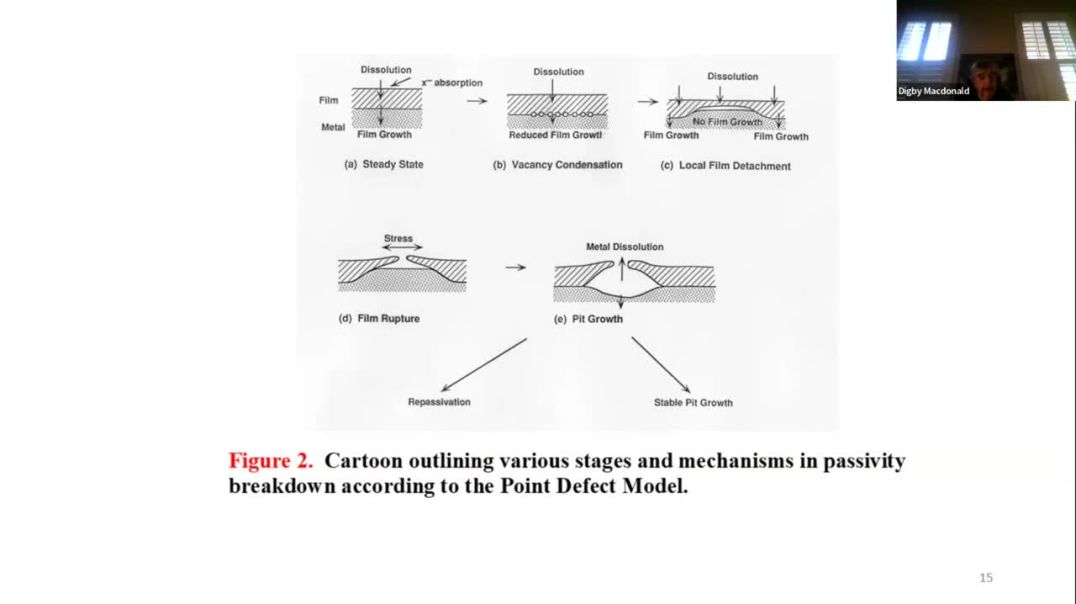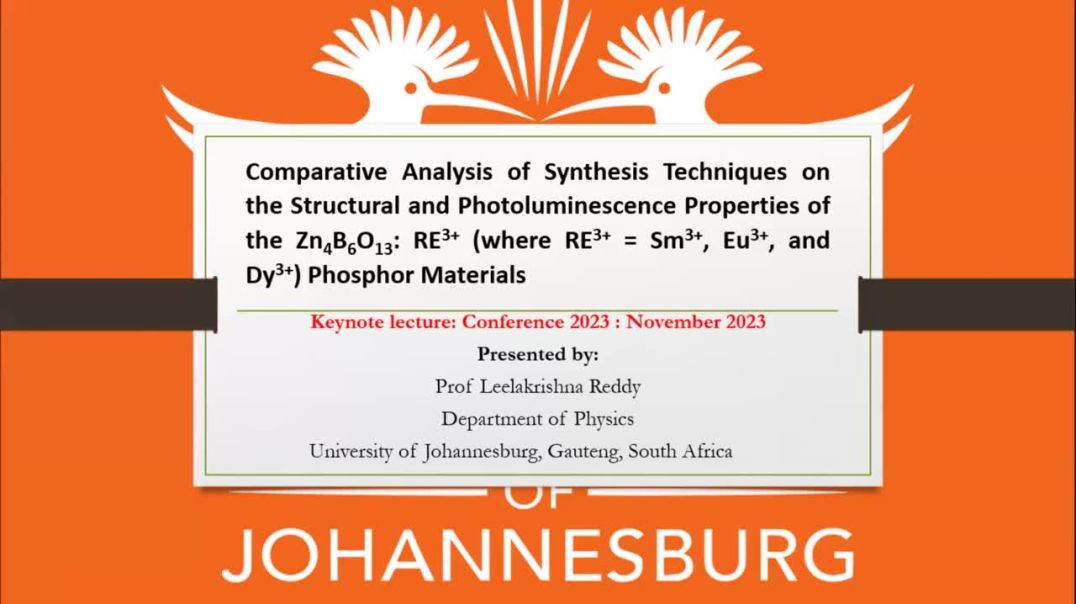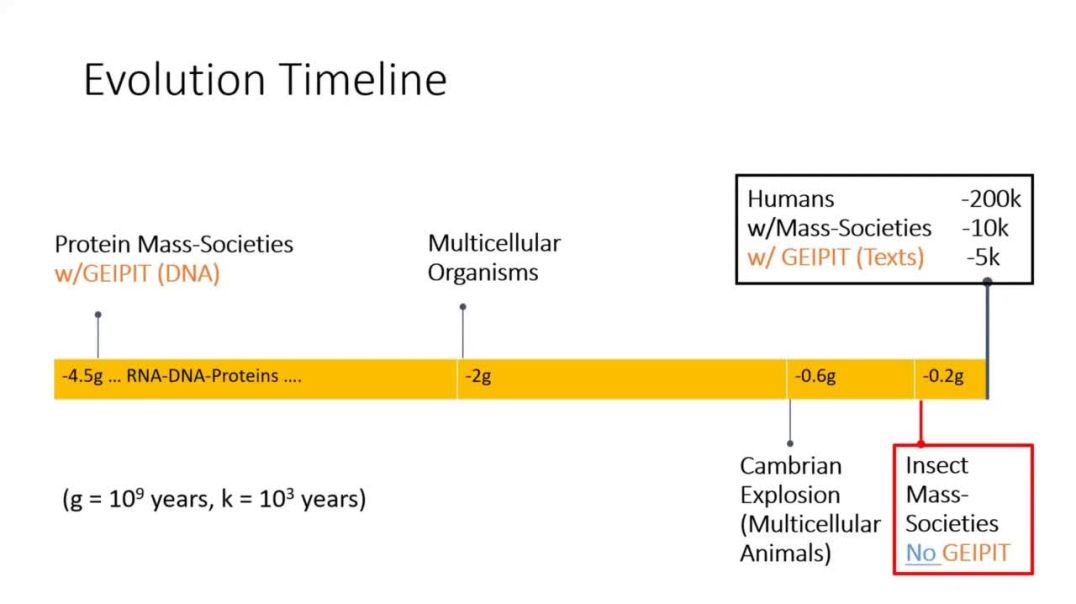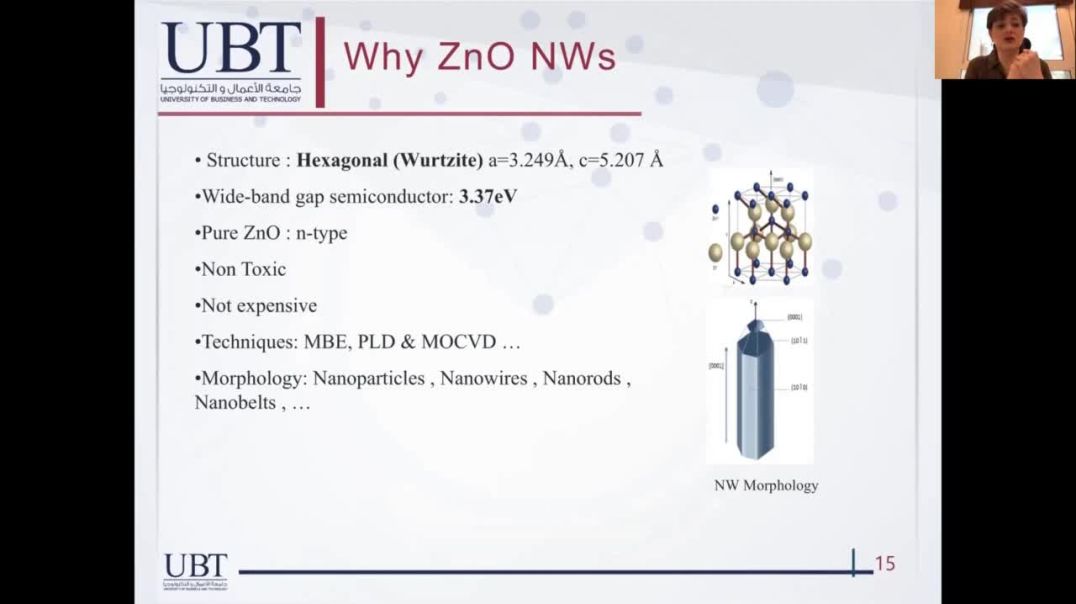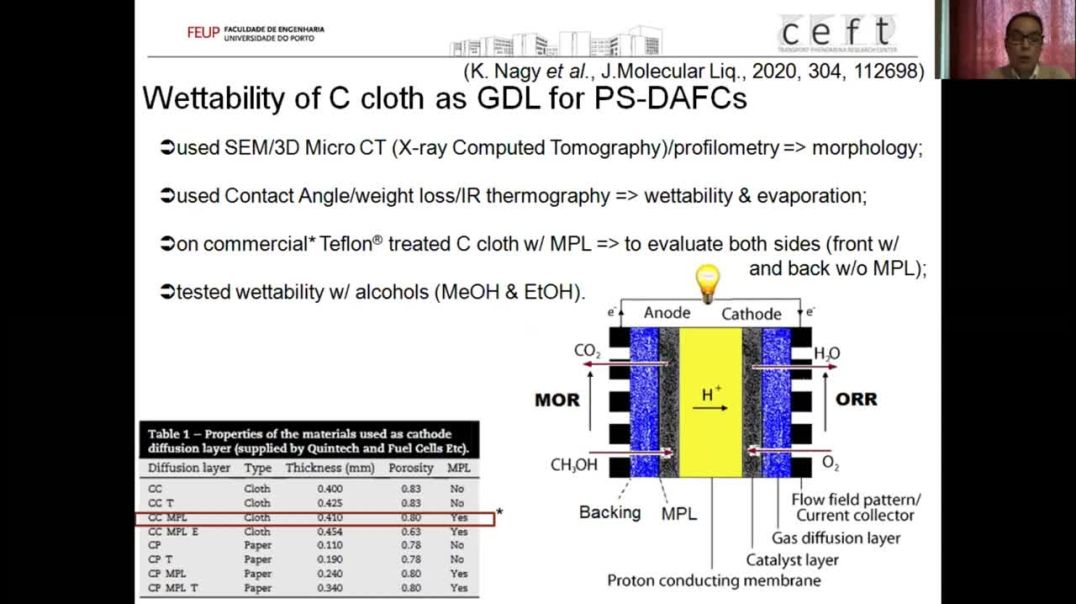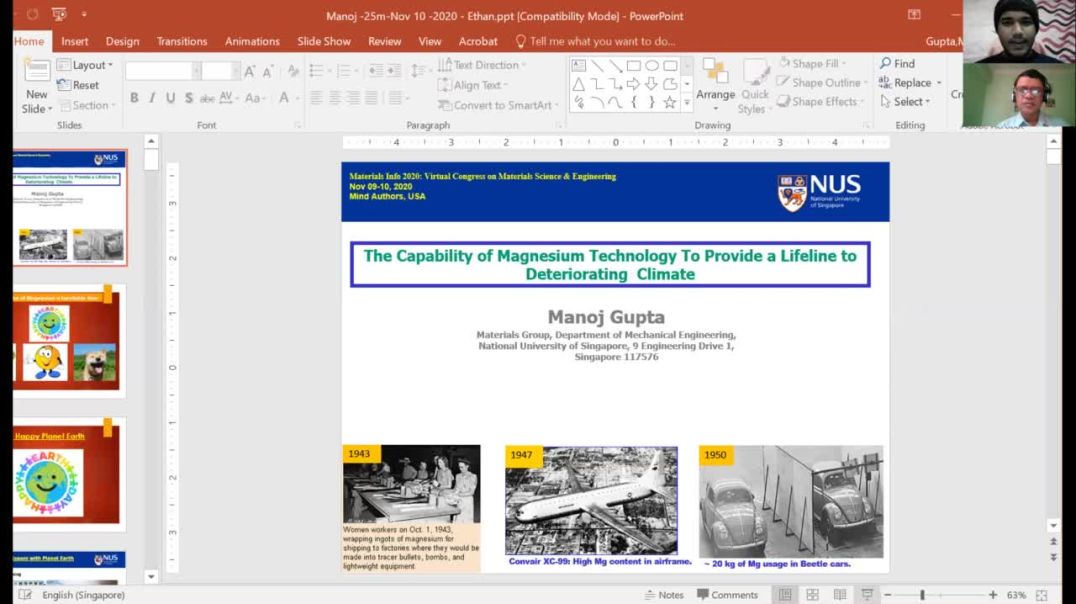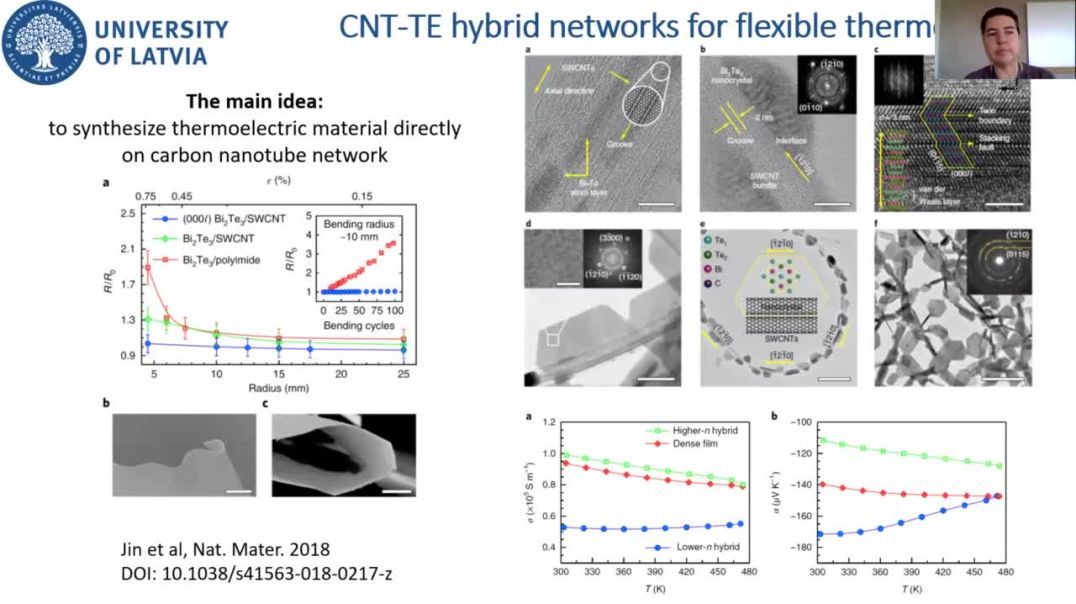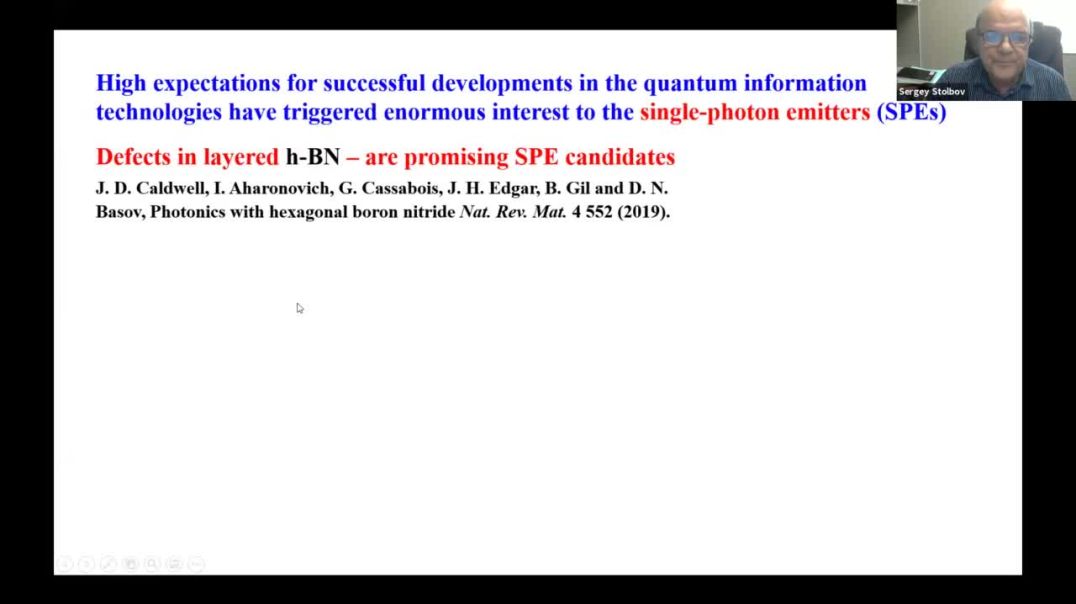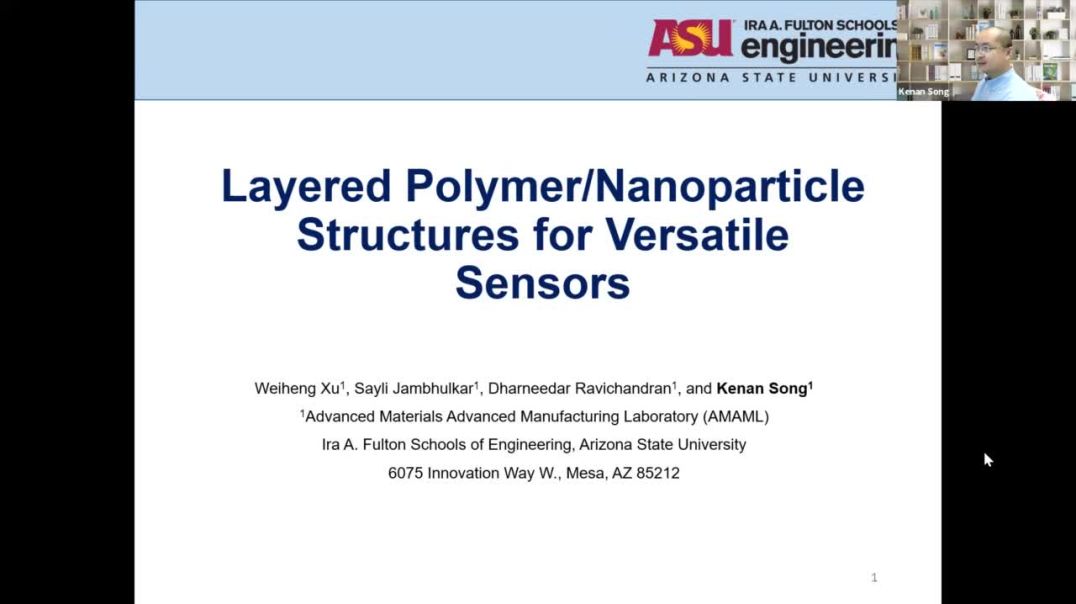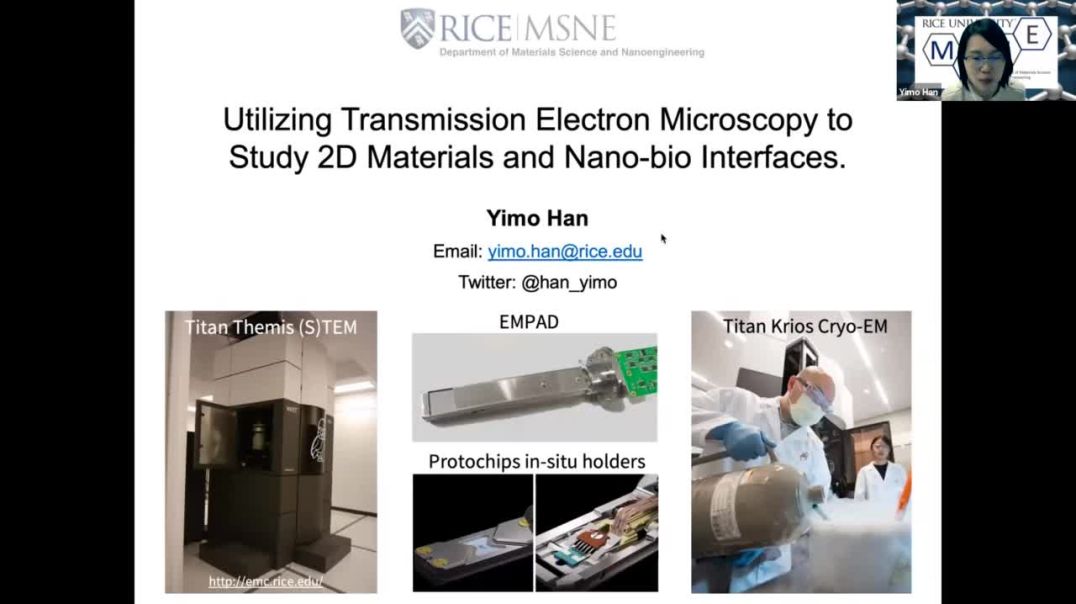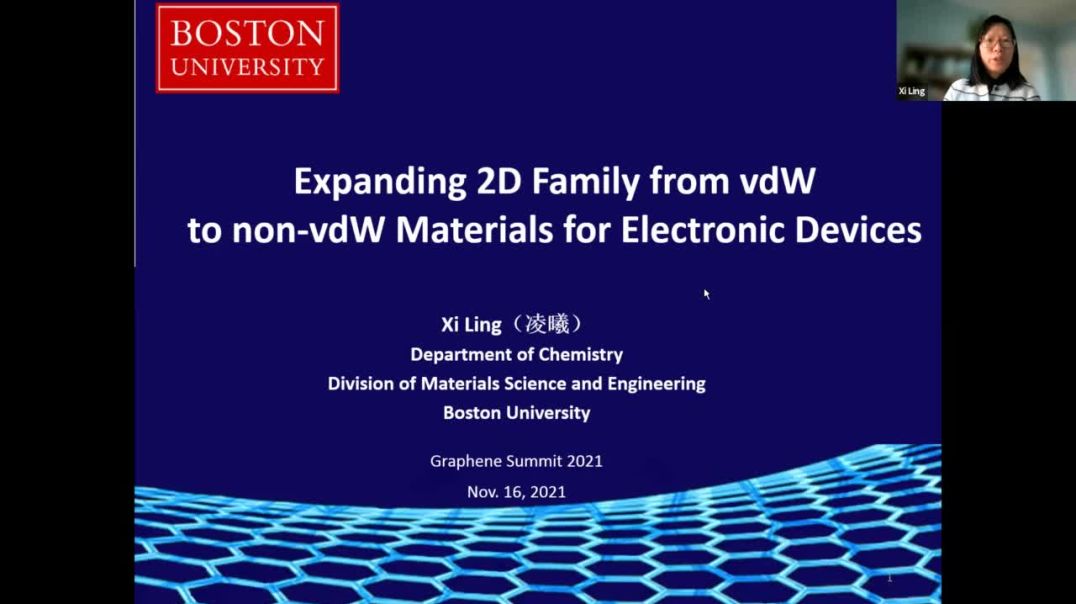नवीनतम वीडियो
Summary :
We reported a method for the removal of crystal violet (CV) dye from wastewater excreted by textile industries. Here, we employed the use of reduced graphene oxidesupported nanoscale zero-valent iron (nZVI/rGO) nanocomposite along with H2O2 for CV removal. For this purpose, nZVI/rGO nanocomposite was prepared by reduction of ferrous sulfate heptahydrate (FeSO4⋅7H2O) and graphene oxide (GO) with sodium borohydride (NaBH4) and used as a potential sorbent for removal and/ or minimization of CV from aqueous solution. Zeta, transmission electron microscopy (TEM), UV–Visible spectroscopy, and Fourier-transform infrared spectroscopy (FTIR) were performed to characterize nZVI/rGO nanocomposite. Further, the chemical method for dye removal was also investigated using hydrogen peroxide (H2O2) as a chemical reductant. The effects of nanocomposite concentration, temperature, and time were examined to evaluate their role in dye elimination. The concentration of CV in the aqueous solution was calculated by studying absorbance using a UV–Visible spectrophotometer. The use of both H2O2/ nZVI-rGO provided a synergistic effect and resulted in efficient and fast removal of CV from an aqueous solution.
About Author :
Professor Minakshi Sharma studied Zoology at Maharshi Dayanand University and completed her post-graduation in 1994. She then received her degree of Ph.D. in 2005 from the same university in Biosensing and Nanotechnology. She joined as an assistant professor at college, M.D. University, Rohtak up to 2009. Then joined as a reader in Deptt. of Zoology, M.D. University, Rohtak from 2009-2012 and as an associate professor from 2012-2015 in same. From 2015 to till date she is working as a professor in the same Deptt. of M.D. University. She has attended 70 National/International conferences and has published approx. 60 research papers.
Emerging Non-volatile Electronic Memory Devices from Polymer to Graphene Derivatives | Iulia Salaoru
Summary :
In recent years, the interest in non-volatile memory (NVM) has shown a rapid increase from both perspectives from academia and industry. The factors driving this intense interest are mainly attributed to their simple (two-terminal), zero power draw for sustaining a state, high-speed operation, good endurance but also their multi-state capacity. Solid state implementations of these devices show great potential in applications such as: reconfigurable architecture, neuromorphic computing and artificial synapses. Numerous candidates for emerging electronic memory technologies such as ferroelectric (FeRAM), phase-change random access memory (PCRAM), magneto-resistive (MRAM), resistive random-access memory (ReRAM), organic memory and more recently graphene derivatives have been proposed and investigated by a number of research groups worldwide. The main functional property of NVM cells is toggling between distinct electrical conductance states when SET and RESET potentials are applied, with a state being sensed by an intermediate read voltage. Current research efforts are focused on determining the physical switching mechanism that facilitates the bistability behavior, particularly in Graphene Derivatives and polymer memory devices. This talk will encompass two of the most investigated non-volatile memories: polymer and graphene oxide-based memory. The possible physical switching/charging mechanism(s) along with experimental evidence will be presented in this work. Along with the electrical experimental results, we have also used the chemical characterization tools to further understand the operating mechanism(s). This will be presented as well.
About Author :
Dr Iulia Salaoru received a BSc (Physics), MSc (Physics) degree from the “Al. I. Cuza” University, Iasi, Romania, where she also awarded a PhD degree for her work on AIIBVI semiconducting compounds. Since completing her PhD, she has worked as a Postdoctoral Researcher at: Emerging Technologies Research Centre, De Montfort University, Leicester; Centre for Bio-inspired Technology, Imperial College London; Nanofabrication Centre, University of Southampton and Warwick Manufacturing Group (WMG), University of Warwick. Currently, Dr Iulia Salaoru is Associate Professor in Materials Science and Engineering at De Montfort University, Leicester, UK
Summary ;
CuO is currently used in various type of applications including gas sensors, solar energy conversion, photocatalysis, and lithium-ion batteries (LIBs). Among them, CuO has been found more attentions for LIBs due to its high theoretical capacity (674 mAhg-1), good capacity retention, low cost, non-toxic nature, and ease of storage. The electrochemical performances of CuO mainly depend on crystallinity and morphology, which significantly depend on the synthesizing technique. The hydrothermal method, which is a promising process that improves the crystallinity with favorable morphology for electrode materials has not well been studied and hence this study aims for preparing CuO anode materials using the hydrothermal method. The coin cells were assembled in an argon-filled glove box with anodes fabricated with synthesized CuO, lithium as the reference electrode and counter electrodes, and non-aqueous electrolyte of 1M LiPF6 in ethylene carbonate and dimethyl carbonate (1:1wt%). Galvanostatic chargedischarge testing performed on the cells showed a significantly high initial specific discharge capacity of 987.3 mAhg-1 while maintaining high Coulombic efficiency of around 99% over 50 cycles. Even though higher irreversible capacity of 313.8 mAhg-1 showed for the 1st cycle, a lower irreversible capacity of 7.6 mAhg- 1 showed for the 50th cycle.
About Author :
Roshan Fernando is currently a Research Assistant attached to the Nanotechnology and Advanced Materials project of the National Institute of Fundamental Studied (NIFS). He has obtained his first degree in Physics from the University of Kelaniya in 2014 and M.Phil in Material Physics from the University of Kelaniya in 2019. He joined the NIFS in 2020 and now reading for his PhD from the Postgraduate Institute of Science, University of Peradeniya. His research focuses on the development of electrode and electrolyte materials for novel rechargeable batteries. His research interests include synthesis materials for energy storage systems and electrochemistry for energy storage applications.
Summary :
The various forms of localized corrosion, including pitting corrosion (PC), stress corrosion cracking (SCC), corrosion fatigue (CF), electropolishing (EP), and flowassisted corrosion (FAC) are generally treated as separate phenomena although the fall under the umbrella of the differential aeration hypothesis (DAH). In this paper, I reveal a theoretical basis, in addition to the DAH, for unifying all forms of localized corrosion. The treatment makes use of the condition imposed by the Point Defect Model (PDM) for defining the conditions for the passivity of a metal and inquiring as to the events that occur at the point of nucleation. For example, in the case of passivity breakdown, which is the precursor to pitting, it is essential for the barrier oxide layer to be prevented from continued growth into the substrate metal. This occurs via condensation of cation vacancies on the cation sublattice at the metal/barrier layer interface such that the barrier layer is no longer in contact with the metal. However, outside of the nucleus, the barrier layer is still in contact with the metal and growth of the barrier layer into the metal continues via the generation of new (film) cations and oxygen vacancies. Simultaneously, dissolution of the battier layer continues at the barrier layer/solution interface with the result that the barrier layer thins preferentially over the pit nucleus. At some point the barrier layer “cap” over the nucleus ruptures allowing the intrusion of water and eventually to the establishment of differential aeration. At that point, the cavity actively grows to form an active pit.
About Author :
Digby D. Macdonald is Professor in Residence in the Departments of Nuclear Engineering and Materials Science and Engineering at the University of California at Berkeley. He specializes in the growth and point defect structures of thin oxide films on metal surfaces and developed the Point Defect Model for describing such systems. He also developed the modern theory of stress corrosion cracking, corrosion fatigue, and pitting corrosion in terms of the deterministic Coupled Environment Models and is a pioneer modern Electrochemical Impedance Spectroscopy. One of his major activities is the modeling of the electrochemical and corrosion properties of structural materials in the coolant circuits of operating, water-cooled nuclear reactors. He has published more than 1000 papers in peer-reviewed journals and conference proceedings and four books. He is a Fellow of the Royal Society of Canada, the Royal Society of New Zealand (the “National Academies” of those countries.
Summary :
Various chemical synthesis techniques, including sol-gel, combustion, and solid-state reactions, offer promising opportunities for generating high-purity nanophosphors with diverse morphologies. In this project, we aim to conduct a comparative study on the structural and photoluminescence properties of Zn4B6O13: RE3+ (where RE3+ = Sm3+, Eu3+, and Dy3+) nanophosphors using the above-mentioned techniques. To date, no such comparative study based on different synthesis techniques have been reported. However, from our literature survey we have conducted, we have discovered that these methods have a profound effect on the structural and photoluminescence characteristics of these prepared phosphor materials, making it imperative to investigate their effects on the highly crystalline Zn4B6O13: RE3+ (where RE3+ = Sm3+, Eu3+, and Dy3+) nanophosphors.
About Author :
Prof. L Reddy, a distinguished scholar, earned his prestigious PhD in Physics from the esteemed University of Johannesburg in South Africa. With a profound expertise in condensed matter physics, he has consistently demonstrated a fervent passion for research and exploration. Initially delving into the magnetic properties of bulk materials, Prof. Reddy has since shifted his focus towards the captivating realm of luminescent properties in phosphor materials. This captivating field opens exciting avenues in diverse applications such as phototherapy, energy storage in battery cells, light-emitting devices, and cuttingedge display lighting systems. As a visionary leader, Prof. Reddy leads a dedicated research team that explores magnetic properties at the nanoscale level, pushing the boundaries of scientific understanding in this domain. His contributions to the scientific community are invaluable, with a prolific publication record in esteemed peer-reviewed journals. Recognized for his expertise, he is frequently invited to deliver keynotes and invited lectures at prestigious conferences worldwide, illuminating current topics in nanotechnology. Prof. Reddy’s mentorship has played a pivotal role in nurturing future talent, as he has successfully supervised numerous MSc and PhD students, leaving an enduring impact on the scientific landscape. In South Africa, he is esteemed as an NRF-rated scientist, a testament to his remarkable contributions and dedication to advancing the field of nanotechnology. He envisions nanotechnology as the vanguard of solving contemporary challenges in medicine, health, battery technology, lighting devices, communication technology, and solar cells, making him a catalyst for innovative solutions that benefit humanity.
Summary :
How can we design functional solid materials, such as catalysts and photocatalysts? What is the decisive structural parameters controlling their activities, performance or properties? What is obtained as structural properties by popular conventional analytical methods, such as X-ray diffraction (XRD) or nitrogen-adsorption measurement, is limited to bulk crystalline structure and specific surface area, i.e., no structural characterization on amorphous phases, if present, and surface structure has been made so far. This is because there have been no macroscopic analytical methods to give surface structural information including possiblypresent amorphous phases. Recently, we have developed reversed double-beam photoacoustic spectroscopy (RDB-PAS) which enables measure energy-resolved distribution of electron traps (ERDT) for semiconducting materials such as metal oxides [1,2]. Those detected electron traps (ETs) seem to be predominantly located on the surface for almost all the metal oxide particles, and therefore they reflect macroscopic surface structure, including amorphous phases, in ERDT patterns. Using an ERDT pattern with the data of CB bottom position (CBB), i.e., an ERDT/ CBB pattern, it has been shown that metal oxide powders, and the other semiconducting materials such as carbon nitride, can be identified without using the other analytical data such as XRD patterns or specific surface area, and similarity/ differentness of a pair of metal-oxide samples can be quantitatively evaluated as degree of coincidence of ERDT/CBB patterns.
About Author :
The research work on photocatalysis by Professor Bunsho Ohtani started in 1981 when he was a Ph. D. course student in Kyoto University. Since then, he has been studying photocatalysis and related topics for 40 years and published more than 300 original papers (h-index: 70) and two single-author books. After gaining his Ph. D. degree from Kyoto University in 1985, he became an assistant professor in the university. In 1996, he was promoted to an associate professor in Graduate School of Science, Hokkaido University and was then awarded a full professor position in the Catalysis Research Center (presently Institute for Catalysis), Hokkaido University in 1998 and retired at the end of March 2022. He was awarded several times form the societies related to chemistry, photochemistry, electrochemistry and catalysis chemistry.
Summary ;
This paper concerns the sudden advent of unique bio-mathematical self-similarity across >9 orders of magnitude based on T-patterns; self-similar patterns repeated with significant translation symmetry in the temporal structure of neuronal, animal, and human behavior and in information molecules and texts, unique self-similarity arising in an eyeblink after half a billion years of evolution in multicellular life, that is, between unicellular life and modern masssocieties, between the mass-societies of proteins in cells and human mass-societies; themselves composed of cells. This project began in the 1970’s much inspired by N. Tinbergen, K. Lorenz, and K. von Frisch’s research on animal and human social behavior winning the Nobel Prize in Physiology or Medicine in 1973, the first in the biology of behavior, Ethology. Insects were then the smallest animals studied and none were components of the others, no nanoscale actors nor self-similarity. Billions of years ago, the RNA world invented extra individual purely informational T-strings, DNA, and soon there was only the DNA world of DNA based mass-social proteins (cells). Billions of years later in a multicellular world, humans invented extra individual purely informational T-strings – TEXT, and now nearly all human life is TEXT-based and masssocial, unique self-similarity allowing in an eye blink the advent of modern science, and technology. -- DNA has nano scale elements, but TEXT can be of any scale.
About Author :
Magnus S. Magnusson, PhD, Emeritus Research Professor, founder, and director of the Human Behavior Laboratory (hbl.hi.is), School of Health Sciences, University of Iceland. Author of the T-system, detection algorithms and software THEMETM (PatternVision. com), initially focusing on real-time organization of behavior. Co-directed of two-year project “DNA analysis with Theme”. Keynotes in biology, neuroscience, mathematics, science of religion, proteomics, A.I., robotics and nanoscience. Associate Professor and Deputy Director 1983-1988 in the Museum of Mankind of the French National Museum of Natural History, Paris. Repeatedly, invited Professor at the University of Paris V, VIII & XIII. Now works in formal collaboration between 32 European and American universities initiated 1995 at the University Rene Descartes of Paris V, Sorbonne, based on “Magnusson’s analytical model”.
Summary :
Solar energy is converted to electrical potential by a sequence of events: the absorption of light, generation of charges carriers (electrons and holes), the separation of the electrons from holes and their transport to electrodes. Great attention has been given to solar cells due to their promising in their electricity conversion efficiency, their simple device fabrication process and their low cost. Zero dimensional nanostructures have gained interest due to their unique properties especially tuning their band gap based on their size. Graphene has recently emerged as an alternative to ITO substrate as an electrode in solar cells structure. With its remarkable electrical, physical and chemical properties, and high degree of flexibility and transparency; it is considered as an ideal candidate for flexible 3rd generation solar cells, the graphene solar cells an eco- green technology is getting to the same level of ITO based solar cells. This presentation is about presenting a flexible quantum dots sensitized solar with graphene electrode .
About Author :
Basma El Zein, PhD, SMIEEE, Solar Pioneer, Lifetime Achiever. Director General , Governance and sustainability Center at the University of Business and Technology (UBT). She has 22 years of experience in academic and research institution. She was the founder and dean of scientitifc Research at UBT, Research Scientist at KAUST, and an associate researcher at IEMN, Lille, France. Her recent research interests include working on nanostructures for third generation solar cells, energy harvesting and energy storage. She gained 2 grants, to support her research on Nanostructures for Photovoltaic applications. She is a reviewer in many international, peer-reviewed journals, the chair or co-chair and on the committee of different international conferences; she published in many international journals and had one patent filed in USA.
Challenges in the development of lead free piezoelectrics for electromechanical applications | Paula
Summary :
The global piezoelectric devices market is estimated to grow from USD 28.9 billion in 2020 to USD 34.7 billion by 2025; at a CAGR of 3.7%. Key factors driving the growth of this market include the rising demand for piezoelectric devices for energy harvesting, aerospace & defense applications [1]. The market has been dominated by the solid solution of lead zirconate titanate, namely PbZr0.52Ti0.48O3 (PZT), that exhibits unique piezoelectric properties with maximized figures of merit. However, environment issues and health concerns associated with Pb toxicity are currently driving the search for alternative lead free piezoelectrics. In this talk the opportunities and challenges in the development of lead free piezoelectrics for electromechanical applications are presented and discussed. The leading PbO-free candidates replacements are (K1-xNax)NbO3.(KNN), (Bi0.5Na0.5)TiO3 (BNT) and (Ba,Ca)(Zr,Ti)O3 (BCZT). KNN remains the most promising lead-free piezoelectric system to replace PZT. The electromechanical properties are still inferior to PZT but its high Curie temperature (TC = 420°C) potentially facilitates higher temperature applications and limits issues of de-poling, which are significant problems for BNT and BCZT. In addition, the control of sintering and general ceramic engineering of KNN is far from complete, prompting opportunities for improvements in processing. In this talk I will describe the interplay between materials structure, microstructure, electrical conductivity, and non-linear dielectric properties for KNN ceramics and single crystal prepared by a set conventional and non-conventional sintering processes and the implications of these relations for enhancing the electromechanical performance [2-7].
About Author :
Prof Paula Vilarinho is the professor at Department of Materials and Ceramic Engineering (DEMaC), Centre for Research in Ceramics and Composites, CICECO, University of Aveiro, 3810-193 Aveiro, Portugal.
Summary :
Corrosion is considered to be major challenge faced by oil and gas industry which becomes more disastrous in heavy operating conditions. In this research, zirconia nanoparticles were incorporated in NiP matrix to study the effect of concentration of ZrO2 particles in the NiP-ZrO2 nanocomposite coatings. Low alloy steel was used as the substrate and pulse electrodeposition technique was utilized owing to its advantages over other deposition methods. Co-electrodeposition of various concentrations of zirconia nanoparticles (0.0, 0.25, 0.50, 0.75, and 1.0 g/L) was carried out in the optimized chemical bath. Numerous techniques were adopted to evaluate the structural, morphological, mechanical and electrochemical properties of nanocomposite coating. SEM and EDS results prove the successful reinforcement of zirconia nanoparticles in NiP matrix. XRD and XPS analysis validates the structural formation of pure phase of NiP without any evident defect. An appreciable enhancement in the mechanical properties was noticed with an increase in the amount of zirconia nanoparticles. Likewise, EIS analysis confirms a gradual increase in corrosion protection behavior of the NiP-ZrO2 nanocomposite coatings with increasing zirconia concentration. The decent mechanical and corrosion resistance properties of NiP-ZrO2 nanocomposite coatings provide an exciting option for their suitability in numerous applications.
About Author :
I am a graduate student at the prestigious institute of Qatar University in the department of mechanical and industrial engineering. I have completed Bachelor of Engineering from Visvesvaraya Technological University India in the field of mechanical engineering with distinction grade throughout my academic career. My interest in material sciences have led me to pursue my research work in advanced material at the Center for Advanced Materials-Qatar University under my guide Dr Abdul Shakoor (impact factor = 385) who has co-authored more than 100 research articles in high impact scientific journal. Currently, my research areas are surface modification and surface characterization through state-of-the-art techniques. I have participated in various research-based internships. I have co-authored couple of published articles in composite coating.
Summary :
Copper oxide (CuO) loaded titanium dioxide (TiO2) nanotube photocatalyst was synthesised using the facile hydrothermal method. The synthesised photocatalyst were characterised by X-ray diffraction (XRD), field emission scanning microscopy (FESEM), transmission electron microscopy (TEM), high resolution transmission electron microscopy (HRTEM) and X-ray photoelectron spectroscopy (XPS) to study their physiochemical properties. The photocatalytic activity of the photocatalysts was tested for carbon dioxide (CO2) photoconversion and methyl orange degrdadation. CuO loaded TiO2 nanotube demonstrated higher CO2 conversion (100%) and methyl orange degradation because of the former’s effective separation of photogenerated electron-hole pairs in the presence of CuO.
About Author :
Mohd Hasmizam Razali has a PhD degree in Materials Engineering (Nanomaterials) from Universiti Sains Malaysia (USM), MSc. in Chemistry (Catalyst) and B.Sc (Hons) in Chemical Industry from Universiti Teknologi Malaysia (UTM). Currently he is an Associate Professor at Faculty of Sciences and Marine Environment, Universiti Malaysia Terengganu (UMT), Malaysia. He has published more than 50 technical papers in journals and conference proceedings locally and internationally related to the nanomaterials and functional materials research. Owing to their significant impacts to the science, economy and society, his innovative research and inventions have attracted global and national interests, enabling him to secure financial support from both private and government agencies. He has been awarded Who’s Who in the World for 3 years in a row 2013, 2014 and 2015 by The Marquis Who’s Who Publications Board. In 2014, the Cambridge Biographical Centre listed him as one of 2000 Outstanding Intellectuals of the 21st Century, due its ability to produce nanomaterials with tremendous improvement compared to conventional commercial materials. On top of that, he is also the recipient of the MAWHIBA Award and GENEVA Gold Medal Award in 1999.
Summary :
Passive small direct alcohol fuel cells (PS-DAFCs) are compact, stand-alone devices that can convert chemical energy in the fuel (alcohol) into electricity, with no auxiliary liquid pumps and gas blowers or compressors. Owing to the low pollutant emissions associated with the high energy density provided by the electrooxidation of the fuel, PS-DAFCs are extremely attractive as sustainable off-grid power sources for portable applications [1]. PS-DAFCs are considered promising alternatives to conventional batteries, as small power sources (milliwatts to watts), very suitable for the next-generation portable consumer electronics, such as wearable gadgets and medical devices [2]. This presentation aims at assess and discuss the critical role of Materials Science & Engineering in the development of PS-DAFCs technology, as well as highlight the innovations, challenges and R & D needs over the most recent years. Materials selection for critical components of PS-DAFCs are examined, and the predominant engineering issues related to the development of prototypes and further commercial products are explored.
About Author :
Maria Helena de Sá is a Chemist/Materials Scientist. She concluded the Ph.D. in Electroanalysis at the University of Porto (Portugal) in 2002. Since then she has worked as science teacher and as a researcher in the field of Materials Science and Nanotechnology, for several national and international projects. Currently, her research mainly focuses on advanced nanomaterials toward sensing and catalysis applications. Recently, she joined the Transport Phenomena Research Center (CEFT) at the Faculty of Engineering of the University of Porto (FEUP), as postdoctoral researcher to support the NewPortCell project. Where she is engaged in developing and characterizing new electrocatalysts, in order to optimize the performance of fuel cells for sustainable energy production in portable applications.
Summary :
The global warming has become a known and clear danger to all living organisms on planet earth and it is a high time that serious and sincere steps should be taken to stem it. Researchers are trying worldwide to innovate ways and one of the ways is through the use of lightweight materials. The root cause of global warming is the use of fossil fuels and any method that can reduce their consumption will be useful. Energy intensive sectors and particularly the transportation sector are the main sources of global warming. The use of lightweight materials is of particular importance to transportation sector (road, rail, aerospace and maritime). Aluminum based materials still dominate this sector and they must be replaced by magnesium based materials which offer 33% weight saving on a part-to-part basis. There already exists many commercial magnesium alloys that can replace aluminum based materials provided the industry change their mind set really quickly. In view of this urgent need of humanity, this presentation aims to highlight the importance of magnesium technology and capabilities of new magnesium based materials to bridge the gap in engineering applications. Besides a brief introduction will also be provided to the simultaneous capability of magnesium based materials to be used in biomedical applications.
About Author :
Dr Manoj Gupta was a former Head of Materials Division of the Mechanical Engineering Department and Director designate of Materials Science and Engineering Initiative at NUS, Singapore. He did his BEng from VRCE-Nagpur in 1984 (First Class with Distinction), MEng from IISCBangalore in 1987 (Gold Medalist) Ph.D. from University of California, Irvine, USA (1992), and postdoctoral research at University of Alberta, Canada (1992). In August 2017 he was highlighted among Top 1% Scientist of the World Position by The Universal Scientific Education and Research Network and among 2.5% among scientists as per ResearchGate. His current h-index is 67, RG index is 47 and citations are greater than 17000. He has also co-authored six books, published by John Wiley, Springer and MRF – USA and edited many others. He is Editorin- chief/Editor of twelve international peer reviewed journals. A multiple award winner, he actively collaborate/visit as invited researcher, visiting and chair professor in Japan, France, Saudi Arabia, Qatar, China, USA and India.
Summary :
Bismuth and antimony chalcogenides (Bi2Se3, Bi2Te3, Sb2Te3) are well-known near-room temperature thermoelectric (TE) materials, representing at the same time a new class of materials - Topological Insulators (TI). These materials exhibit unique protected from scattering surface conductivity. For most of the current TI, the surface effects are masked by the contribution of their bulk conductivity. It can be suppressed by an increase of surface-to-volume ratio of TIs through their down-sizing to nanoscale. Topological surface states of the TI materials have great potential for enhancement of TE efficiency of TI materials. For example, it has been predicted theoretically that reduction of the thickness of TI thin films below 10 nm will initiate the hybridization band gap because of interaction between the top and bottom surface states of the material, which may result in an increase of the TE figure of merit of the material by factor 10. In turn, the combination of TI nanostructures with carbon allotropes as graphene and carbon nanotubes is great platform for studying of TI properties at room temperature and for application of these materials in flexible TE devices. This presentation is devoted to synthesis of high-quality TI nanostructures and ultrathin (below 10 nm) nanostructured films on different surfaces (quartz, mica, graphene, carbon nanotubes) by simple, fast and cost-effective physical vapor deposition method, and to investigation and analysis of TE properties of synthesized nanostructured.
About Author :
Born in Riga, Latvia in 1975. Always was amazed with exact sciences, especially physics, and dreamed to work in some research institution. After obtaining Bachelor’s degree in Physics in 1997 and Master’s degree in physics in 2002 ( both at Phyiscs and Math Faculty of the University of Latvia (UL FMF)). Joined the Institute of Chemical Physics of the University of Latvia in 2005 in a position of research assistant; enrolled into PhD studies in 2006; obtained Doctoral degree in Solid State physics in 2012 (still UL FMF). Still working in the Institute of Chemical Physics, but already in a position of senior researcher. Also working as an independent expert, evaluating projects (M-ERA.net, Horizon2020). Hobby – shooting (archery, pneumatic guns).
Summary :
In this study, Polypropylene (PP) (HE125MO, supplied from Borealis) matrix was reinforced with purified, ultrafine grinded feldspar functional filler (ESF 501 PC 3, developed by Esan) at different concentrations including also epoxy-functional surface modification at one concentration. This functional filler and/or extender, which has a median particle size of 2.5–3.0 microns, has tightly controlled particle size distribution and produced from Turkey’s resources; a naturally occurring, silica deficient. The preparation of composites were carried out using lab-scale twin screw co-rotating micro-extruder (15 mL micro-compounder®, DSM Xplore) with the loading ratios of 1, 5 and 10 wt. % and also 5 wt. % with silane treatment. The test samples were shaped by injection-molding process. Surface characteristics of feldspar sample was confirmed by infrared spectroscopy in ATR mode. Mechanical, thermal, structural and processing investigations of PP-based composites were reported performing tensile, differential scanning calorimetry (DSC), thermal gravimetric analysis (TGA) and equipment torque and force measurements, respectively.
About Author :
Alinda Oyku Akar works at Esan Eczacibasi Industrial Raw Materials.
Summary :
Quantum information technologies have triggered enormous interest to the single-photon emitters (SPEs), such as local defects in wide-band-gap semiconductors. Recently, singlephoton emission was observed in carbon-doped hexagonal boron nitride (h-BN).1 To reveal the structure and formation energy of the defects, we select six possible C-based defects, including ones with simple substitutional doping and substitutional doping combined with extra vacancy formation. Our density-functional-theory-based calculations of optimized geometries and point phonon frequencies reveal that one of the selected defects (proposed elsewhere as SPE) is dynamically unstable and undergoes a structural transformation. We perform calculations of the electronic structure using the linear response approach (GW method) followed by calculations of the solution to the Bethe-Salpeter equation to obtain the excitation spectra of dynamically stable defects. Upon comparing the obtained results with the reported SPE spectra,1 I will show that only one of the considered defects has an excitation spectrum fitting the conditions for the observed single-photon emission. That is the defect formed upon substitution of an N-atom by carbon (CNdefect). Importantly, this defect is also found to be the most thermodynamically stable among those under consideration.
Summary :
Nanoparticle alignment can benefit composites’ controllable mechanical reinforcement, magnetic responsiveness, electrical actuation efficiency, light transmittance, targeted drug delivery, gaseous or liquid separation/purification, and localized heat transfer. Self-assembly, electrical or magnetic fields have been used to achieve the nanoparticle arrangements. However, it is hard to reach significant manufacturing speeds and high fabrication resolutions. In this study, our approach via 3d printing for well-controlled polymer surfaces and template effects for directed nanoparticle orientations and depositions. The in-house designed 3d printing had the developed surface topologies with a series of patterns such as line grooves or dot wells manufactured on polymer substrates. Both resin-based and filament-based additive manufacturing mechanisms were included in the manufacturing process. Upon dispersed in suitable solvents, the nanoparticles adhered to the printed surface along the liquid-air-solid contact lines. The drying thermodynamics and the confinement effects from the template arranged the nanoparticles with different morphologies. The orientation of nanoparticles and the relationships to the processing conditions were studied by atomic force microscopy (AFM) and scanning electron microscopy (SEM). In addition, mechanical properties and functional sensing behaviors were measured for the layered composites.
About Author :
Kenan Song is currently holding an Assistant Professor position at Arizona State University. Before joining ASU in 2017, he was a postdoc jointly affiliated with the Department of Materials Science and Engineering and the Department of Chemical Engineering at MIT. Dr. Song obtained his Ph.D. degree in Mechanical Engineering from Northeastern University (Boston, MA) in 2014 and B.S. in Engineering Mechanics in 2010. Dr. Song’s research interest includes the processing-structure-property relationships, especially the manufacturing, characterization, simulation, and application of polymer-based nanoparticle-filled composites, aiming for high performance in structural and functional utilization.
Summary :
Two-dimensional (2D) materials have shown great promise in next-generation devices due to their atomic thinness and broad electronic properties. To realize these post-silicon electronics, it will be necessary to electrically connect these 2D materials both in- and out-ofplane. However, the lattice mismatch between these atomic membranes leads to unavoidable strain, dislocations, or ripples, which can strongly affect the mechanical, electronic, and optical properties. This presentation will discuss using state-of-the-art four-dimensional scanning transmission electron microscopy (4D-STEM) techniques to address how different 2D materials merge to form lateral heterostructures. The study has enabled discoveries of the intricate and complex interface structures unique to 2D materials. Subsequent control or engineer of these deformations can profoundly impact future material and device development.
About Author :
Dr. Han is an assistant professor of Materials Science and NanoEngineering. She received her B.S. in Physics from Tsinghua University and Ph.D. in Applied Physics from Cornell with Prof. David Muller. Her research focused on electron microscopy and the characterization of nanomaterials. After graduating from Cornell University, she joined Prof. Nieng Yan’s group in the Department of Molecular Biology at Princeton University to expand her knowledge on cryo-EM, as well as develop ways to utilize nanomaterials in biological characterization. Dr. Han started her own lab in the Department of Materials Science and NanoEngineering at Rice University in July 2020. Her group has a focus on developing novel TEM techniques to investigate nanomaterials and nano-bio interfaces.
Summary :
Atomically thin crystals (also known as twodimensional (2D) materials) have been considered potential candidates to expand the forefront of semiconductor technology, towards or potentially beyond Moore’s law, due to their unprecedented properties. Conventionally, single layers of van der Waals (vdW) bulk materials (e.g. graphite) serve as the source of 2D materials (e.g. graphene). Recently, the 2D family are expanding to the atomically thin crystals of materials whose bulk are atomically bonded in three-dimensional (3D) modes, such as metal nitrides and oxides. Because of the lack of vdW gap in their bulk, their synthesis remains a great challenge with conventional synthetic strategies. In the first part of my talk, I will introduce our work on the chemical vapor deposition of vdW MoS2 monolayers and related structures, with particular focus on the arbitrary patterns of MoS2 monolayer and the lateral heterostructures with other 2D materials (e.g. graphene). The second part will concentrate on our recent work on expanding the 2D family by synthesizing non-vdW metal nitrides and oxides through chemical conversion strategy. Their potential roles in enhancing the device performances will also be discussed.
About Author :
Xi Ling is an assistant professor of Chemistry and Materials Science & Engineering at Boston University. She earned a Ph.D. in Physical Chemistry at Peking University and a B.S. in Chemistry from Lanzhou University. She was a postdoctoral associate with Mildred Dresselhaus at Massachusetts Institute of Technology (MIT). Dr. Ling leads an interdisciplinary research group focused on the fundamental science and applications of nanomaterials and their hybrid structures. Her work has been recognized through the reception of awards including NSF CAREER award (2020), BU Ignition award (2020), the Materials Science and Engineering Innovation award from Boston University (2017), the University Provost’s Career Development Professorship award at Boston University (2017), and the EECS rising star from MIT (2015).
Summary :
An experimental study of the graphene conductivity in an aqueous environment is carried out in this study. The presence of a time dependence of the graphene resistivity in water is established. In addition, the characteristic relaxation times of resistivity are determined when graphene is immersed in water and then dried. The resistivity temperature dependence is used to estimate the values of the band gap arising in graphene due to water contact. Based on the analysis of molecular dynamics modeling data, a possible mechanism responsible for the opening of the band gap in graphene is proposed. This mechanism is associated with the inhomogeneous tangential electric field appearance in the plane of the graphene flake, caused by water molecules structured near the graphene surface.
About Author :
Vladimir Andryushchenko, Senior Lecturer, Department of Physics, Novosibirsk State University, conducted his PhD in Institute of Thermophysics, Russia. Now he has been studying on mechanistic aspects of fluid structuring near different objects: graphene, nanotubes, nanoparticles. He is also interested in molecular dynamics modeling of protein folding.



